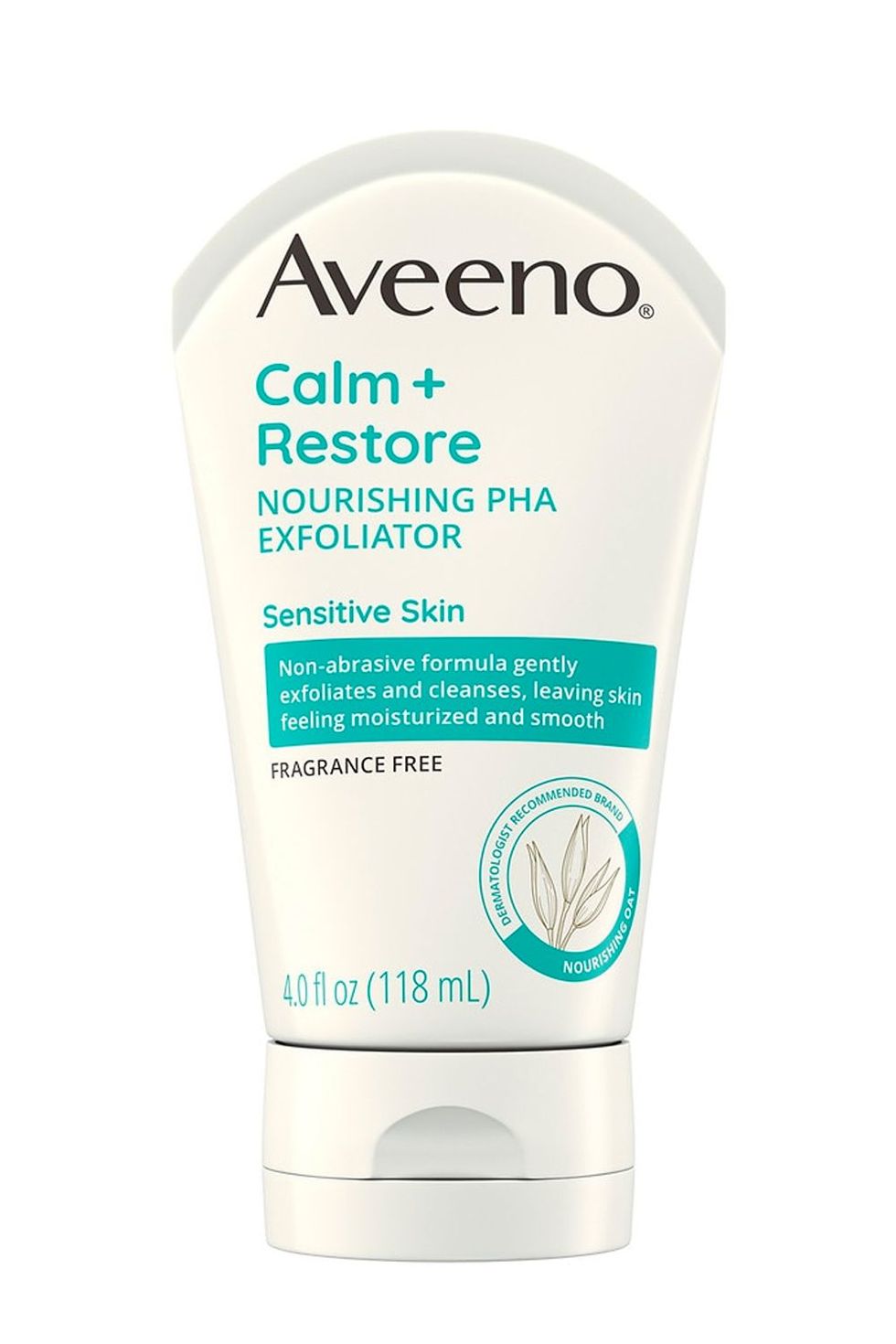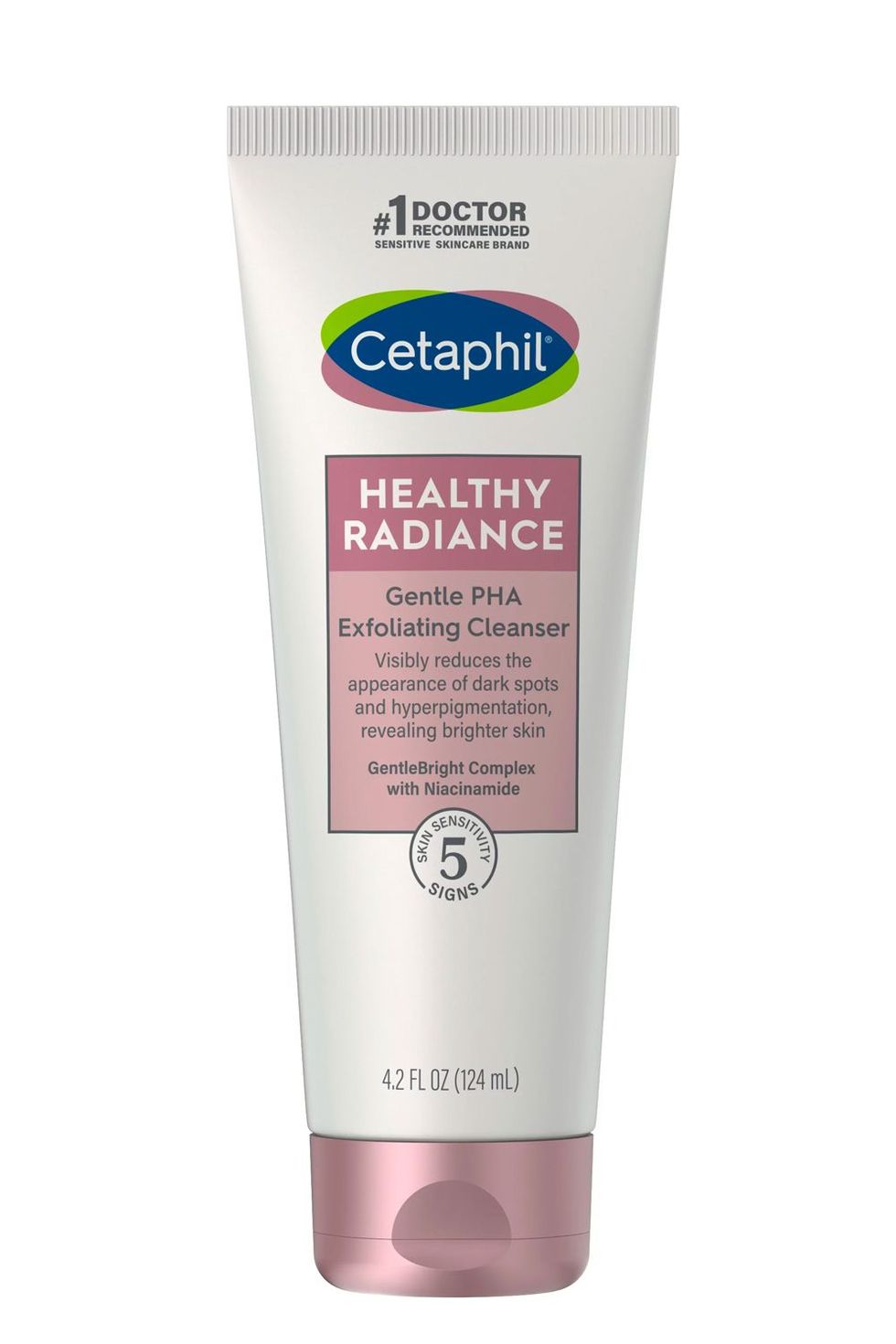How To Exfoliate Sensitive Skin?
Last Updated on June 18, 2025 by Jaclyn A. Neeley
To exfoliate sensitive skin, use gentle exfoliators with natural ingredients and avoid harsh scrubs or abrasive tools. Exfoliation helps remove dead skin cells, unclog pores, and promote a healthier complexion.
By following the right exfoliation routine, you can achieve smoother and brighter skin without causing irritation or inflammation. Sensitive skin requires extra care, as it can easily react to harsh products. Therefore, it is essential to choose exfoliators specifically formulated for sensitive skin types that are both effective and gentle.
We will explore the best practices and products for exfoliating sensitive skin, ensuring a safe and effective exfoliation experience. So, let’s dive in and discover how to exfoliate sensitive skin while maintaining its health and integrity.
Sensitive Skin
Exfoliating sensitive skin requires a gentle approach to avoid irritation and discomfort. Understanding the unique characteristics of sensitive skin and identifying common triggers can help you develop a personalized exfoliation routine that promotes a healthy, glowing complexion.
Characteristics Of Sensitive Skin
Sensitive skin is more vulnerable and reactive to external factors compared to other skin types. Those with sensitive skin often experience:
- Tightness or dryness
- Redness or flushing
- Stinging or burning sensations
- Irritation or itchiness
- Prone to allergic reactions
It’s important to note that sensitive skin can vary in severity, with some individuals having mild sensitivity while others may have more pronounced reactions. Regardless of the level, it is crucial to approach exfoliation with caution and choose products and techniques specifically formulated for sensitive skin.
Common Triggers For Sensitive Skin
Several factors can trigger sensitivity in the skin. Identifying these triggers will allow you to take proactive steps to minimize the risk of irritation during exfoliation:
- Environmental Factors: Extreme temperatures, harsh weather conditions, and exposure to environmental pollutants can all contribute to sensitive skin reactions. Protecting your skin with suitable clothing and using gentle skincare products can help mitigate these triggers.
- Fragrances and Dyes: Artificial fragrances and dyes found in many skincare products can be harsh on sensitive skin. Opting for fragrance-free and dye-free options can minimize the risk of irritation.
- Chemical Ingredients: Certain ingredients like sulfates, alcohol, and acids can be too harsh for sensitive skin. It is essential to read product labels and avoid ingredients known to trigger irritation.
- Overexfoliation: Exfoliating too frequently or using abrasive exfoliants can disrupt the skin’s natural barrier and lead to sensitivity. Limiting exfoliation to once or twice a week and choosing gentle exfoliating methods is crucial for sensitive skin.
- Incorrect Skincare Routine: Using the wrong skincare products or techniques can exacerbate sensitivity. It’s important to choose products specifically formulated for sensitive skin and to follow a gentle, consistent skincare routine.
By understanding the characteristics of sensitive skin and identifying common triggers, you can make informed decisions when it comes to exfoliating your skin. In the following sections, we will explore effective exfoliation techniques and products suitable for sensitive skin, ensuring a gentle and satisfying experience.

Credit: www.cosmopolitan.com
Importance Of Exfoliation For Sensitive Skin
Exfoliation is an essential step in any skincare routine, but when it comes to sensitive skin, it becomes even more crucial. The delicate nature of sensitive skin requires gentle and careful exfoliation to avoid irritation and further skin issues. Understanding the importance of exfoliation for sensitive skin can help you achieve a healthier and more radiant complexion. In this article, we will explore the benefits of exfoliating sensitive skin and provide you with some precautions to follow for a successful exfoliation experience.
Benefits Of Exfoliating Sensitive Skin
Exfoliating sensitive skin can bring about multiple benefits that contribute to its overall health and appearance. Some of the key advantages include:
1. Removal of Dead Skin Cells: Exfoliation helps to eliminate the accumulation of dead skin cells on the surface of your skin. This process unclogs pores and allows your skin to breathe, preventing breakouts and dullness.
2. Smooth and Even Texture: Regular exfoliation promotes a smoother and more even skin texture by reducing the appearance of rough patches and easing the texture irregularities caused by sensitivity.
3. Improved Absorption of Skincare Products: By removing the barrier of dead skin cells, exfoliation enhances the absorption of skincare products. This allows your serums, moisturizers, and other treatments to penetrate deeper into your skin, maximizing their effectiveness.
Precautions For Exfoliating Sensitive Skin
Exfoliating sensitive skin requires some additional precautions to ensure a safe and beneficial exfoliation experience. Here are some guidelines to follow:
1. Choose Gentle Exfoliants: Opt for exfoliants specifically formulated for sensitive skin, such as chemical exfoliants with AHA or BHA. These exfoliants are milder and less likely to cause irritation compared to physical exfoliants like scrubbing beads or brushes.
2. Test Patch First: Before applying any new exfoliant to your skin, do a patch test on a small area to check for adverse reactions. This step helps you identify potential sensitivities and avoid widespread irritation.
3. Limit Frequency: Sensitive skin should not be exfoliated more than once or twice a week to prevent overstimulation and damage to the skin’s protective barrier. Take note of your skin’s response and adjust the frequency accordingly.
4. Follow with Hydration: After exfoliating, it’s important to replenish your skin’s moisture levels. Apply a gentle and hydrating moisturizer to soothe and nourish your freshly exfoliated skin.
5. Protect Your Skin: Always follow up exfoliation with broad-spectrum sunscreen to shield your skin from harmful UV rays. Exfoliating can make your skin more susceptible to sun damage, so proper protection is crucial.
By understanding and implementing these precautions, you can safely and effectively exfoliate your sensitive skin, reaping the numerous benefits that come with it.
Choosing The Right Exfoliation Method
If you have sensitive skin, exfoliating can seem like a daunting task. However, when done correctly and with the right method, exfoliation can help to gently remove dead skin cells, revealing a more radiant complexion. When it comes to choosing the right exfoliation method for sensitive skin, it’s important to consider both chemical and physical options. Here, we’ll discuss the benefits and considerations of each method to help you make an informed decision.
Chemical Exfoliation
Chemical exfoliation involves the use of acids or enzymes to gently dissolve dead skin cells. This method is ideal for those with sensitive skin as it minimizes the risk of irritation and inflammation that can occur with physical exfoliation. There are two main types of chemical exfoliants to consider: alpha hydroxy acids (AHAs) and beta hydroxy acids (BHAs).
Alpha Hydroxy Acids (AHAs)
AHAs, such as glycolic acid and lactic acid, are water-soluble and work by breaking the bonds between dead skin cells, allowing them to be sloughed away more easily. They are particularly effective in improving the texture and tone of the skin, reducing the appearance of fine lines and wrinkles, and promoting a more youthful complexion.
Beta Hydroxy Acids (BHAs)
BHAs, such as salicylic acid, are oil-soluble acids that penetrate deeper into the pores, making them ideal for those with sensitive, acne-prone skin. BHAs help to unclog pores, reduce inflammation, and regulate sebum production, which can help to prevent breakouts and improve overall skin clarity.
Physical Exfoliation
Physical exfoliation involves the use of abrasive particles or tools to manually scrub away dead skin cells. While this method can be effective in promoting smoother skin, it’s important to be gentle and avoid using harsh or abrasive exfoliants, as they can cause irritation and micro-tears in the skin. Here are a few gentle physical exfoliation methods to consider:
Microfiber Cloths
Microfiber cloths are incredibly soft and gentle on the skin, making them ideal for sensitive skin types. Simply wet the cloth with warm water, and using gentle circular motions, buff away dead skin cells. Microfiber cloths are reusable and offer a sustainable and eco-friendly option for physical exfoliation.
Exfoliating Brushes
Exfoliating brushes with soft bristles can provide a gentle physical exfoliation method. When using an exfoliating brush, be sure to apply light pressure and avoid over-scrubbing. This method can help to stimulate circulation, improve skin texture, and promote a healthy glow.
Exfoliating Scrubs
When choosing an exfoliating scrub, opt for ones with fine particles, such as sugar or jojoba beads, to avoid causing micro-tears in the skin. Look for scrubs specifically designed for sensitive skin to ensure they are gentle and non-irritating.
Remember, regardless of the exfoliation method you choose, it’s important to start slowly and gradually increase frequency as your skin adjusts. Always follow up with a gentle, moisturizing skincare routine to replenish and soothe the skin. By choosing the right exfoliation method for your sensitive skin, you can enjoy the benefits of a brighter, smoother complexion.
Safe And Gentle Exfoliation Techniques
Exfoliating sensitive skin can be a challenging task. While it is important to remove dead skin cells and unclog pores, the last thing you want is to irritate or damage your delicate skin. That’s why it’s crucial to follow safe and gentle exfoliation techniques specifically designed for sensitive skin. In this article, we will explore a few key methods to help you achieve a healthy and radiant complexion without causing any harm.
Patch Test Before Exfoliating
Prior to diving into any exfoliation routine, it is crucial to perform a patch test to determine how your sensitive skin will react to the chosen exfoliant. To do this, simply apply a small amount of the product on a discreet area of your skin, such as behind the ear or on the inner arm. Leave it on for 24 hours and observe any redness, itching, or irritation. If there are no visible negative reactions, it is safe to proceed with the exfoliation process.
Use Mild Exfoliants
When it comes to sensitive skin, using gentle exfoliants is key. Choose products that are specifically formulated for sensitive skin types and contain mild exfoliating ingredients. Look for exfoliants that feature ingredients such as oatmeal, rice bran, or jojoba beads, as these are effective in removing dead skin while keeping irritation at bay. Stay away from harsh physical exfoliants like apricot kernels or walnut shells, as they can cause microscopic tears and further aggravate sensitive skin.
Gentle Exfoliation Techniques
Applying the right technique while exfoliating sensitive skin can make a world of difference. Here are a few gentle methods to consider:
- Fingertip Massage: Using your fingertips, gently massage the exfoliant onto damp skin in circular motions. This technique helps remove dead skin cells without applying excessive pressure.
- Soft Brush: Opt for a soft-bristled facial brush to exfoliate your sensitive skin. Wet the brush and apply a gentle facial cleanser or mild exfoliant. Using upward circular motions, softly scrub your face, being careful not to scrub too hard.
- Chemical Exfoliation: Chemical exfoliators like alpha-hydroxy acids (AHAs) or beta-hydroxy acids (BHAs) are often gentler on sensitive skin compared to physical exfoliants. These solutions work by dissolving dead skin cells. However, it is important to follow the instructions provided and avoid leaving the product on the skin for longer than recommended.
Avoid Over-exfoliation
It’s important to note that over-exfoliating sensitive skin can do more harm than good. Stick to a maximum of two times per week and closely monitor your skin’s reaction. If you notice any signs of redness, irritation, or increased sensitivity, reduce the frequency to once a week or consider switching to an even milder exfoliant.
Remember, the goal is to gently remove dead skin cells and promote a healthy complexion without compromising your skin’s natural barrier. By patch testing, opting for mild exfoliants, using gentle techniques, and avoiding over-exfoliation, you’ll be well on your way to achieving a smoother, brighter, and more radiant complexion, even with sensitive skin.
Post-exfoliation Care For Sensitive Skin
Discover the essential steps for exfoliating sensitive skin and ensuring proper post-exfoliation care. Find out how to gently exfoliate without irritating your skin and follow these easy tips for a healthier, smoother complexion.
Maintaining Post-exfoliation Care For Sensitive Skin
After exfoliating your sensitive skin, it’s crucial to follow up with proper post-exfoliation care. This step is vital as it helps to restore the skin’s natural balance and protect it from potential irritation or damage. Let’s explore some essential practices for post-exfoliation care for sensitive skin.
Moisturize And Hydrate
One of the most important steps in post-exfoliation care is to restore and maintain the skin’s moisture levels. Exfoliation can leave the skin feeling drier than usual, so it’s essential to replenish the lost moisture. Choose a gentle, fragrance-free moisturizer that is specifically formulated for sensitive skin. Look for ingredients such as hyaluronic acid, glycerin, and ceramides, which help to attract and lock in moisture.
To maximize the moisturizing effect, apply the moisturizer while the skin is still slightly damp. This helps to seal in the moisture and create a protective barrier. Additionally, drink plenty of water throughout the day to keep your body and skin hydrated from within.
Soothe And Calm The Skin
After exfoliation, sensitive skin may experience mild redness, inflammation, or irritation. Soothing and calming the skin should be a priority to minimize these effects. Apply a cooling gel or aloe vera gel immediately after exfoliating to reduce redness and inflammation. These products have natural anti-inflammatory properties that help to soothe the skin and relieve any discomfort.
You can also use a face mask specifically designed for sensitivity and calming effects. Look for ingredients such as chamomile, green tea, oatmeal, or cucumber, as these have soothing properties and can help to reduce any residual irritation. Apply the mask according to the product instructions, and let it work its magic on your skin.
Suncare And Sun Protection
Protecting your skin from the harmful UV rays of the sun is crucial, especially after exfoliation. Exfoliated skin is more prone to sun damage, and sensitive skin can be even more susceptible. Apply a broad-spectrum sunscreen with an SPF of 30 or higher, at least 15 minutes before stepping out into the sun.
Reapply the sunscreen every two hours or after swimming or excessive sweating to maintain its effectiveness. Consider wearing protective clothing, such as hats and sunglasses, and seek shade during peak sunlight hours to further shield your sensitive skin from sun damage.
By following these post-exfoliation care practices, you can ensure that your sensitive skin remains healthy, refreshed, and protected. Incorporate these steps into your skincare routine to maintain the benefits of exfoliation while minimizing any potential irritation or damage.

Credit: www.cosmopolitan.com

Credit: www.beautifulwithbrains.com
Frequently Asked Questions Of How To Exfoliate Sensitive Skin?
How Should Sensitive Skin Exfoliate?
For sensitive skin, exfoliation should be done gently using mild exfoliants. Avoid harsh scrubs or chemical exfoliants. Opt for natural exfoliants like oatmeal, sugar, or rice flour. Limit exfoliation to once or twice a week and always moisturize afterwards to keep the skin hydrated.
What Is The Gentlest Way To Exfoliate?
The gentlest way to exfoliate is by using a gentle scrub or chemical exfoliator. Be sure to choose products with mild ingredients to avoid irritating the skin. Additionally, using a soft washcloth or a gentle exfoliating brush can help remove dead skin cells without causing any damage.
What Is A Homemade Exfoliator For Sensitive Skin?
A homemade exfoliator for sensitive skin is a natural scrub made with gentle ingredients that helps remove dead skin cells and rejuvenate the skin. It is safe, chemical-free, and suitable for those with sensitive skin types.
What Is The Best Scrub For Sensitive Skin?
The best scrub for sensitive skin is one that is gentle and soothing. Look for products with mild exfoliants like jojoba beads or oatmeal. Avoid scrubs with harsh particles or essential oils that can irritate the skin. Opt for fragrance-free options to reduce the risk of sensitivity.
How Often Should You Exfoliate Sensitive Skin?
It is recommended to exfoliate sensitive skin 1-2 times a week to avoid irritation and maintain a healthy glow.
What Is The Best Exfoliator For Sensitive Skin?
When choosing an exfoliator for sensitive skin, opt for gentle products with natural ingredients like oatmeal, sugar, or fruit enzymes.
Conclusion
Exfoliating sensitive skin requires a gentle and cautious approach. By choosing the right exfoliating method, such as chemical or physical exfoliants specifically designed for sensitive skin, you can effectively remove dead skin cells without causing irritation. It’s important to remember to moisturize and protect your skin after exfoliation to maintain its health and prevent any further sensitivity.
With these tips, you can safely and effectively exfoliate your sensitive skin for a smoother and brighter complexion.







